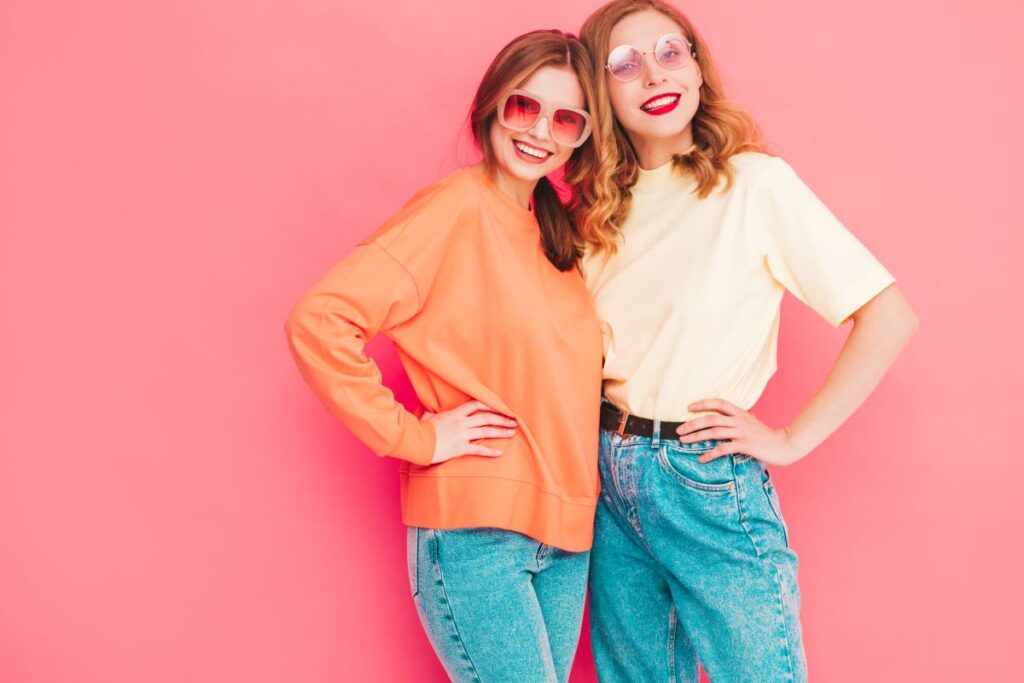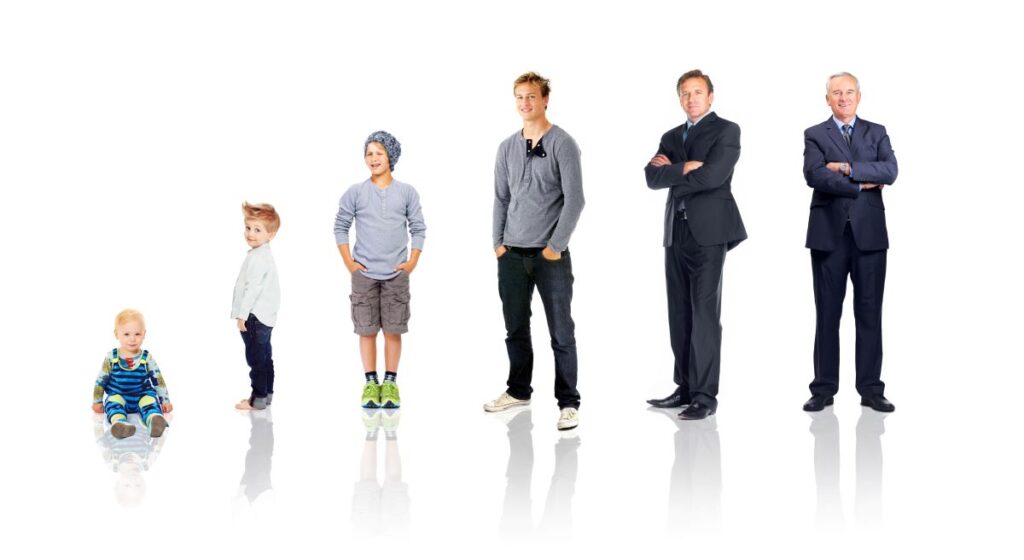The Timeless Cycle of Fashion Trends
Fashion has always been more than just clothing—it’s a reflection of our culture, economy, technology, and identity. Yet one of the most fascinating patterns in the fashion world is how fashion trends seem to circle back every couple of decades.
Look around today’s runways and streets: the baggy jeans of the 1990s are back, 2000s-inspired low-rise pants are trending again, and even vintage corsets from the Victorian era have made modern appearances. This phenomenon isn’t random—it’s part of what fashion experts call the 20-Year Trend Cycle, a rhythm that defines how old styles become new again.

The Psychology Behind Fashion Trends
Humans are deeply nostalgic. Our emotional connection to the past drives much of what we wear. According to psychologists, nostalgia creates comfort and familiarity in uncertain times. This emotional trigger explains why retro styles resurface during periods of social or economic change.
For instance:
- The 1970s bohemian style made a comeback during the 2008 recession when people longed for simpler, freer times.
- The Y2K fashion revival in the 2020s echoes millennials and Gen Z finding comfort in their childhood aesthetics amid global uncertainty.
Fashion is cyclical because culture is cyclical. Each generation borrows from the last but adds its own twist, making the trend feel fresh rather than repetitive.

The 20-Year Rule: How Fashion Evolves in Cycles
The concept of fashion trends repeating every 20 years is not new. Industry analysts have long observed that once a trend fades, it takes about two decades for it to feel new again.
Why 20 years?
Because that’s roughly the time it takes for a generation to grow up, gain spending power, and start influencing cultural aesthetics.
Let’s look at the timeline of recurring fashion trends:
| Decade | Original Trend | Comeback Era | Modern Adaptation |
|---|---|---|---|
| 1960s | Mini skirts, mod dresses | 1980s | Neon minis, power suits |
| 1970s | Bohemian chic, flared pants | 1990s | Retro hippie revival |
| 1980s | Oversized blazers, bold colors | 2000s | Statement shoulders, neon |
| 1990s | Grunge, denim-on-denim | 2020s | Streetwear and baggy jeans |
| 2000s | Y2K futuristic looks | 2020s | Metallic fabrics, low-rise jeans |
The 20-year fashion cycle isn’t an exact science, but the pattern is undeniable. Fashion magazines, brands, and designers strategically use nostalgia to capture audiences who remember the “old” styles fondly, while introducing them to new generations as trendy and cool.

Cultural Forces That Drive Fashion Trends
1. Media and Pop Culture
Movies, music videos, and celebrities are among the strongest influences on fashion trends.
When Madonna wore cone bras in the 1980s or when Britney Spears popularized crop tops in the 2000s, their fans turned those styles into global phenomena.
Today, influencers like Zendaya, Bella Hadid, and BTS shape what Gen Z perceives as fashionable, just like icons did decades before.
2. Economic Cycles
Interestingly, economic conditions often influence whether styles become extravagant or minimalist.
- During economic downturns, fashion leans toward simplicity (e.g., the rise of normcore in 2014).
- During booms, we see bold experimentation, luxury branding, and maximalism.
This ebb and flow mirrors how societies express optimism or caution through clothing.
3. Technology and Sustainability
From sewing machines to 3D printing, technology continuously changes fashion production. However, in the modern era, sustainability plays a major role in bringing old styles back.
Thrift culture and secondhand shopping are not only trendy but also environmentally conscious—further reinforcing why past styles return to the mainstream.
Fashion Subcultures and Their Lasting Impact
Every major fashion trend is born from subcultures—small communities that challenge mainstream style norms.
For example:
- Punk fashion (ripped jeans, leather jackets) started as rebellion in the 1970s but evolved into high-end designer inspiration in later decades.
- Hip-hop fashion influenced streetwear, oversized fits, and luxury sneakers that dominate 2020s fashion.
- Grunge fashion from the 1990s defined the modern “effortless” look embraced by influencers today.
Subcultures keep fashion evolving while also preserving its history. When these once-niche styles re-emerge, they bring their cultural identity with them.
Why Do We Romanticize Past Fashion Trends?
The return of vintage isn’t just about style—it’s about storytelling.
Old clothes remind us of cultural moments, emotions, and personal experiences. Wearing flared pants from the 1970s or neon from the 1980s is like wearing a piece of history.
Moreover, retro aesthetics often symbolize individuality. In an age of mass-produced fast fashion, people crave authenticity and uniqueness—values often found in vintage-inspired pieces.
The Role of Social Media in Reviving Fashion Trends
Platforms like TikTok, Pinterest, and Instagram have drastically accelerated the return of fashion trends. What once took decades to cycle back now takes only a few years.
- TikTok creators revive 90s aesthetics through viral outfit challenges.
- Pinterest boards promote “vintage moodboards.”
- Instagram fashion influencers mix modern and retro pieces, inspiring millions daily.
In short, social media has shortened the 20-year rule into a fast-fashion feedback loop, where nostalgia and virality fuel constant revival.
Fashion Houses and the Art of Reinvention
Luxury brands like Gucci, Chanel, and Dior have mastered the art of reintroducing classic designs to fit modern sensibilities.
For instance:
- Gucci’s 1970s prints returned in 2018 with updated color palettes.
- Chanel’s tweed suits, a 1950s icon, continue to dominate runways in refreshed silhouettes.
- Dior’s saddle bag, originally released in 1999, made a comeback in 2019 and became a Gen Z must-have.
These examples prove that fashion reinvention isn’t about copying the past—it’s about recontextualizing it for today’s audience.
Fashion Trends Explained: Why Styles Keep Coming Back Every 20 Years
How Globalization Changed the Evolution of Fashion Trends
Before the digital age, fashion trends evolved slowly and regionally. Paris, Milan, London, and New York dictated the global fashion narrative, and styles trickled down over months or even years.
Today, however, globalization has flattened that timeline. Fashion is no longer dictated by geography—it’s defined by accessibility.
When a celebrity in Los Angeles wears a Y2K-inspired outfit, that look can appear in fashion boutiques in Tokyo or on influencers in Paris within days.
This interconnectedness speeds up not only the creation of trends but also their revival.
Furthermore, fashion houses now collaborate internationally—mixing Indian embroidery, African prints, and Scandinavian minimalism in a single collection. This global exchange blurs lines between traditional and modern, old and new, vintage and futuristic.
The Economics Behind Recurring Fashion Trends
The fashion industry is a multi-trillion-dollar ecosystem, and repetition isn’t accidental—it’s profitable. Reviving old trends reduces creative risk because there’s a proven emotional connection and market familiarity.
Here’s how brands capitalize on the 20-year cycle:
| Business Strategy | Description | Example in Fashion Trends |
|---|---|---|
| Nostalgia Marketing | Leveraging emotional connection to past decades | Nike re-releasing vintage sneakers like Air Jordans |
| Sustainability Campaigns | Promoting reusing and recycling of vintage styles | Levi’s Vintage Reissue Collection |
| Fast-Fashion Acceleration | Quickly replicating trending retro looks for mass market | Zara and H&M recreating 90s denim looks |
| Luxury Reinvention | Revamping classic collections with modern luxury appeal | Gucci reviving 70s prints and monograms |
This cycle ensures consistent consumer interest and continuous market rotation, keeping both fast fashion and luxury brands thriving.
The Influence of Sustainability on Fashion Trends
In the 2020s, the fashion industry faced a reckoning: overproduction, waste, and environmental damage forced brands and consumers to rethink their habits.
That’s where sustainable fashion trends gained traction—and ironically, they reinforced the return of vintage styles.
Secondhand shopping, upcycling, and DIY customization became not only eco-friendly but also fashion-forward. Wearing “old” clothes was suddenly chic again.
Vintage shopping apps like Depop, Vinted, and Poshmark made it easy for people to resell and rediscover classic pieces. Meanwhile, high-end brands began incorporating recycled materials into new designs, creating a blend of sustainability and nostalgia.
Fashion Trends Through Generations: How Each Age Group Reinvents the Past
Every generation revives fashion differently, shaped by their cultural experiences and social values.
| Generation | Fashion Revival Focus | Cultural Reason |
|---|---|---|
| Baby Boomers | 1950s-60s classics (mod dresses, suits) | Nostalgia for post-war optimism and structure |
| Gen X | 1970s & 80s punk and rock aesthetics | Rebellion against corporate culture |
| Millennials | 1990s minimalism and early Y2K | Nostalgia for their childhood and simpler tech-free times |
| Gen Z | 2000s maximalism, gender-fluid styling | Expression of individuality, digital nostalgia, and inclusivity |
What’s fascinating is that Gen Z, despite being digital natives, are leading the vintage fashion renaissance, embracing thrift shopping, slow fashion, and genderless silhouettes that draw from multiple past eras simultaneously.

The Role of Fashion Trends in Identity and Expression
Fashion is one of the most accessible forms of self-expression. By wearing clothes inspired by past eras, people align themselves with the values or aesthetics those periods represented.
For instance:
- Wearing 70s bohemian outfits might signal freedom and artistic individuality.
- Sporting 90s streetwear could indicate rebellion or authenticity.
- Adopting 2000s Y2K style might express playful self-confidence and irony.
Thus, fashion isn’t just cyclical—it’s personal. The revival of fashion trends allows individuals to choose which part of history they resonate with most.
Technology and the Future of Fashion Trends
As technology continues to reshape industries, fashion is no exception. The emergence of AI design tools, virtual runways, and digital clothing (for avatars and metaverse fashion) is already influencing how trends evolve.
However, even as fashion becomes digital, the inspiration behind it often remains analog—rooted in nostalgia and physical design history.
In the near future, we can expect the line between past and future fashion trends to blur even more, as digital designers remix old silhouettes with futuristic materials and sustainable fabrics.
Fashion Trends and Their Emotional Connection
Ultimately, what keeps fashion trends alive is emotion. When you wear a vintage jacket or 90s-inspired sneakers, you’re not just wearing fabric—you’re wearing memories, cultural symbols, and a shared sense of history.
Fashion designers know this, and that’s why every few decades, they revisit archives to reinterpret what once was. In doing so, they give each generation a way to rediscover and redefine style through a modern lens.
If you enjoyed exploring the cyclical nature of fashion trends, check out our article “Do Luxury Cars Actually Perform Better or Just Feel Premium?” on how performance and perception evolve over time—similar to how style and nostalgia shape fashion today.
Q1. Why do fashion trends repeat every 20 years?
Fashion trends often repeat due to nostalgia, cultural cycles, and the rediscovery of past aesthetics by new generations seeking individuality through retro influences.
Q2. How do social media platforms influence modern fashion trends?
Social media accelerates the spread of styles worldwide, allowing micro-trends to go viral quickly and shaping what becomes mainstream in fashion culture.
Q3. What role does sustainability play in recurring fashion trends?
Sustainability encourages people to reuse, upcycle, and revisit vintage fashion, making cyclical trends more environmentally conscious and resource-efficient.
Q4. Which decades are currently influencing today’s fashion trends?
The 1990s and early 2000s are heavily influencing current fashion with low-rise jeans, crop tops, and minimalist silhouettes returning to the spotlight.
Q5. How do designers reinterpret old fashion trends for modern audiences?
Designers blend vintage aesthetics with modern materials, tailoring, and technology, ensuring classic styles appeal to today’s consumers without feeling outdated.
Q6. Are cyclical fashion trends predictable?
Yes, to some extent. Fashion historians and analysts often predict resurgences based on generational shifts and cultural revivals every two decades.
Q7. What is the psychological reason behind fashion nostalgia?
Nostalgia provides comfort and familiarity during uncertain times, prompting designers and consumers alike to revisit past styles as a form of emotional connection.
Q8. Where can I explore more about the evolution of fashion trends?
You can learn more about the evolution of fashion trends and their historical roots through resources like Vogue Business.

